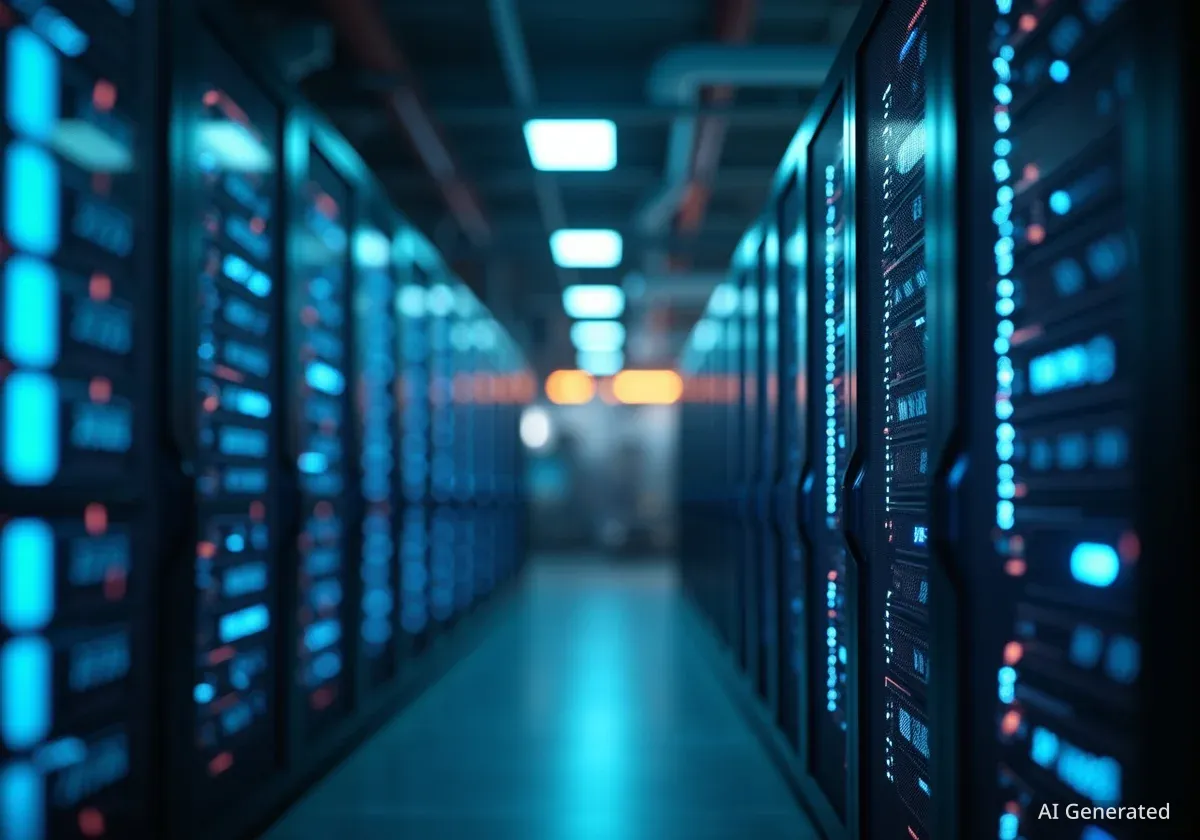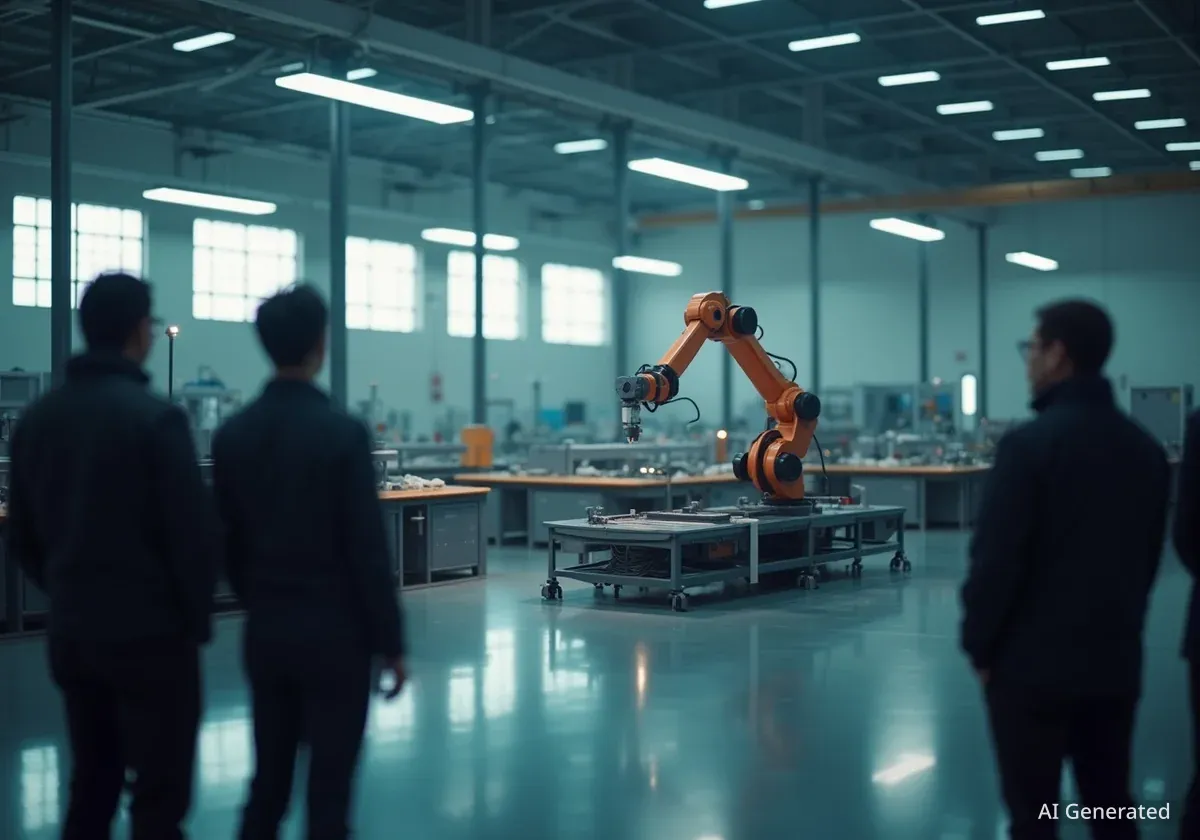A new study from Yale University and the Brookings Institution indicates that artificial intelligence has not yet led to the widespread job displacement that many experts predicted. Researchers analyzed federal employment data up to July 2025, three years after the public release of advanced AI tools like ChatGPT, and found no evidence of mass unemployment linked to the technology's adoption.
The report suggests that while some occupations are changing, the overall labor market has remained resilient. The findings provide a data-driven counterpoint to apocalyptic forecasts about AI's impact on the workforce, indicating a more gradual economic transition is underway.
Key Takeaways
- A joint study by Yale and Brookings found no evidence of mass unemployment caused by AI as of July 2025.
- Researchers analyzed U.S. federal employment data from November 2022, when ChatGPT was released.
- The study observed only a slight increase in the rate of occupational change, suggesting a gradual shift rather than a sudden disruption.
- Experts believe the primary impact of AI so far has been on augmenting existing jobs, not eliminating them entirely.
Detailed Analysis of Employment Data
The research team, led by economists from Yale's Budget Lab, conducted a comprehensive review of federal labor statistics. Their primary goal was to measure the rate of "occupational churn," which is the speed at which the composition of jobs in the economy changes over time. They specifically compared the period before and after November 2022, a date widely seen as the start of the generative AI boom.
According to the study, the rate of change in the mix of occupations has seen only a marginal increase. This suggests that while some jobs are declining and others are emerging, the pace of this transformation is not significantly faster than historical trends associated with previous technological advancements, such as the rise of personal computers or the internet.
By the Numbers
The study found that the occupational churn rate increased by less than 0.5% in the 32 months following ChatGPT's release compared to the preceding 32 months. This is significantly lower than the 2% to 3% increases seen during the dot-com boom of the late 1990s.
AI as an Augmentation Tool
One of the central conclusions of the report is that businesses are currently using AI primarily to augment the capabilities of their existing employees rather than to replace them. This involves using AI tools to automate repetitive tasks, analyze large datasets, or assist with creative processes, thereby allowing workers to focus on more complex, strategic responsibilities.
"Our data suggests we are in a phase of integration, not displacement," a lead researcher from the Brookings Institution stated in the report's summary. "Companies are learning how to use these powerful new tools to make their current workforce more productive. The narrative of imminent, mass-scale replacement is not supported by the evidence at this time."
This finding aligns with anecdotal reports from various industries. For example, software developers are using AI to write and debug code more efficiently, while marketing professionals are using it to generate campaign ideas and copy. In these cases, the technology serves as a powerful assistant, not a substitute for human expertise and judgment.
Historical Context of Technological Change
Economists often point to past technological revolutions to understand current trends. The introduction of automated teller machines (ATMs) in the 1970s did not eliminate the role of bank tellers. Instead, the job evolved from simple cash handling to more complex customer service and sales roles. Many analysts believe a similar evolution is occurring today across many professions impacted by AI.
Shifts Within the Labor Market
While the study found no evidence of a net decrease in jobs, it did identify subtle but important shifts within the labor market. There has been a noticeable increase in demand for roles that require skills in managing and implementing AI systems, such as AI specialists, data scientists, and prompt engineers.
Emerging Job Categories
The report highlights several new or rapidly growing job categories:
- AI Systems Integrators: Professionals who help companies integrate AI tools into existing workflows.
- Data Quality Auditors: Specialists who ensure the data used to train AI models is accurate and unbiased.
- AI Ethics and Governance Officers: Roles focused on ensuring the responsible and compliant use of artificial intelligence.
Conversely, the study noted a slight but measurable decline in demand for jobs that consist largely of routine information processing and data entry tasks. However, these declines have so far been more than offset by growth in other sectors of the economy, preventing an overall rise in unemployment.
Future Outlook and Policy Recommendations
The researchers caution that their findings represent a snapshot in time and that the long-term impact of AI on employment is still uncertain. The technology is evolving rapidly, and more advanced AI systems could have more disruptive effects in the future. The report emphasizes that continued monitoring and proactive policy-making will be crucial.
The study concludes with several recommendations for policymakers, including:
- Investing in education and retraining programs focused on AI-related skills.
- Creating a robust social safety net to support workers who may be displaced in the future.
- Encouraging the development and deployment of AI in ways that complement human labor.
Ultimately, the Yale and Brookings study provides a reassuring, data-backed perspective on the current state of the labor market. While the AI revolution is undeniably transforming the way we work, it has not yet triggered the employment crisis that many had feared. Instead, it appears to be ushering in a period of gradual adaptation and evolution for the American workforce.





